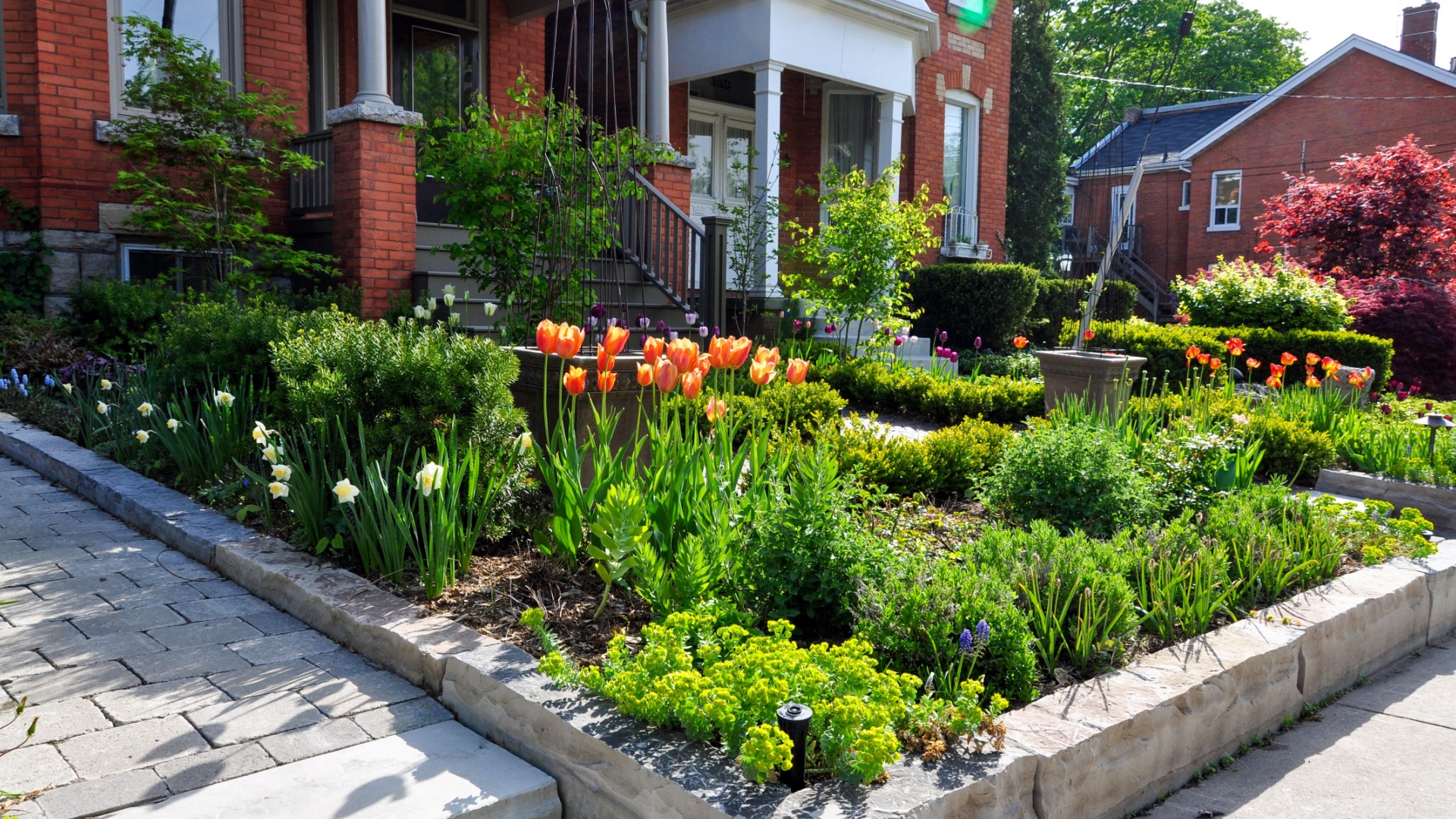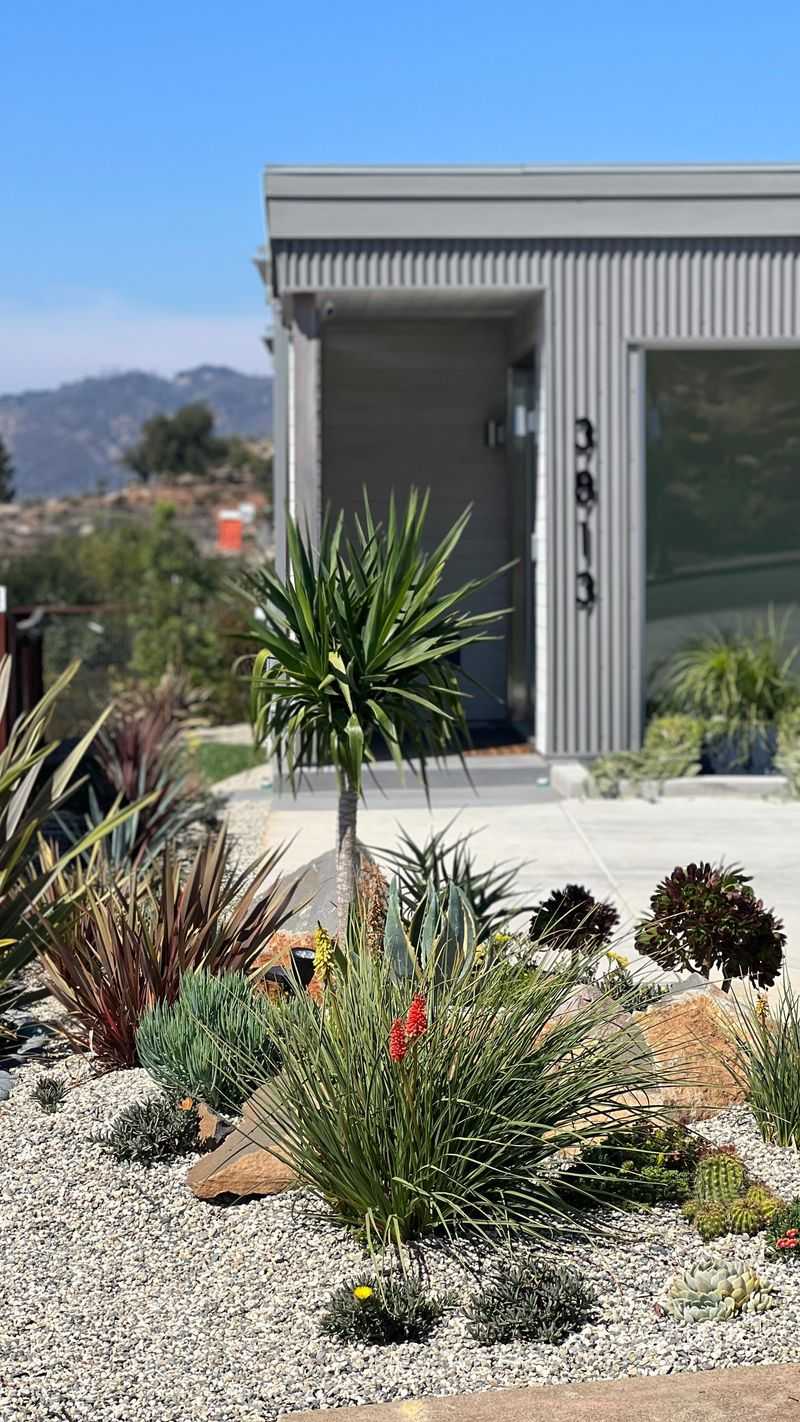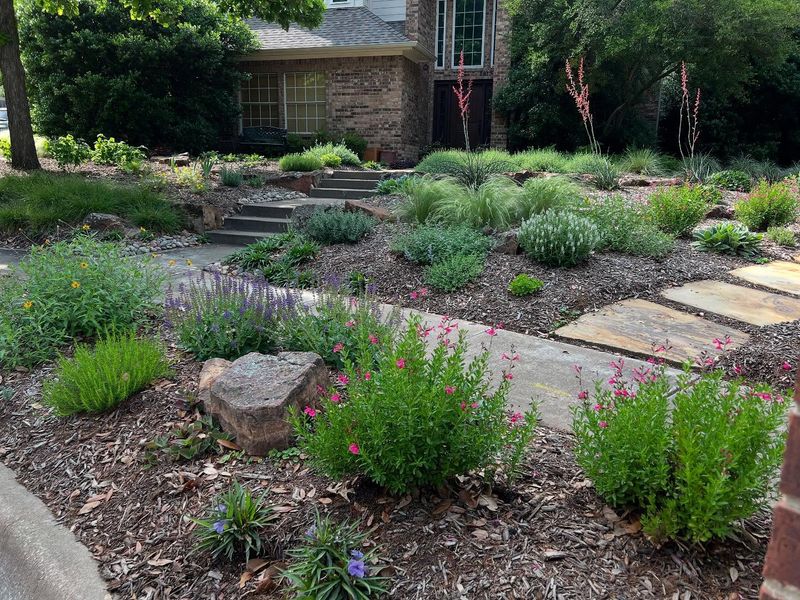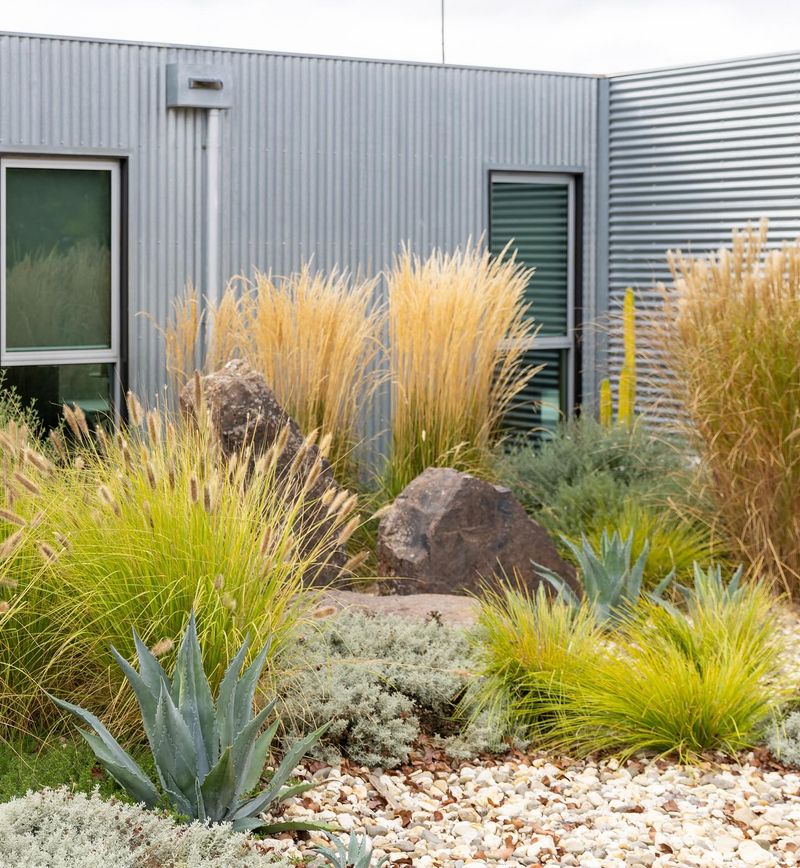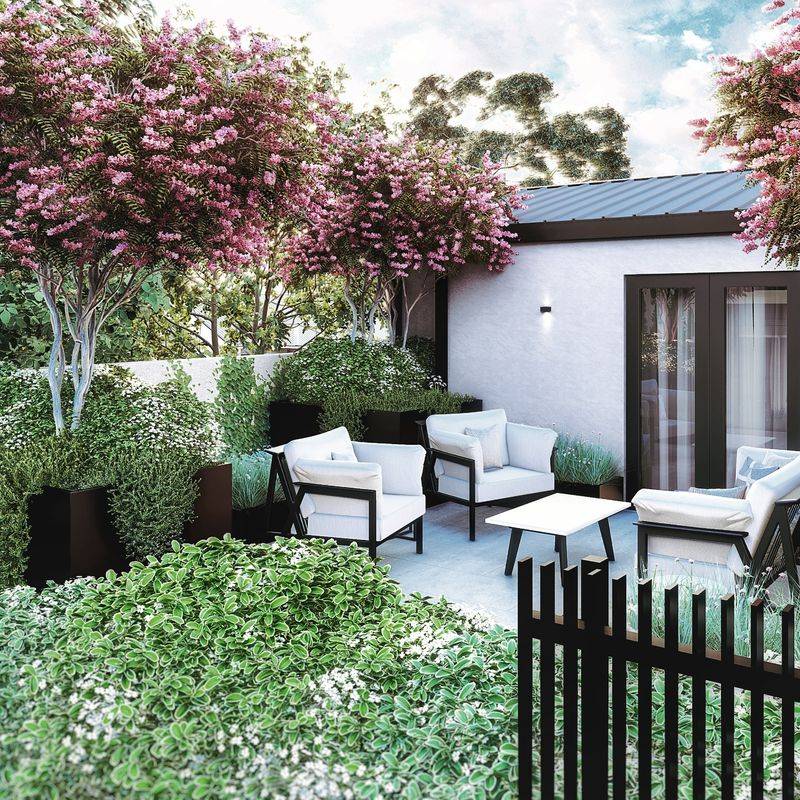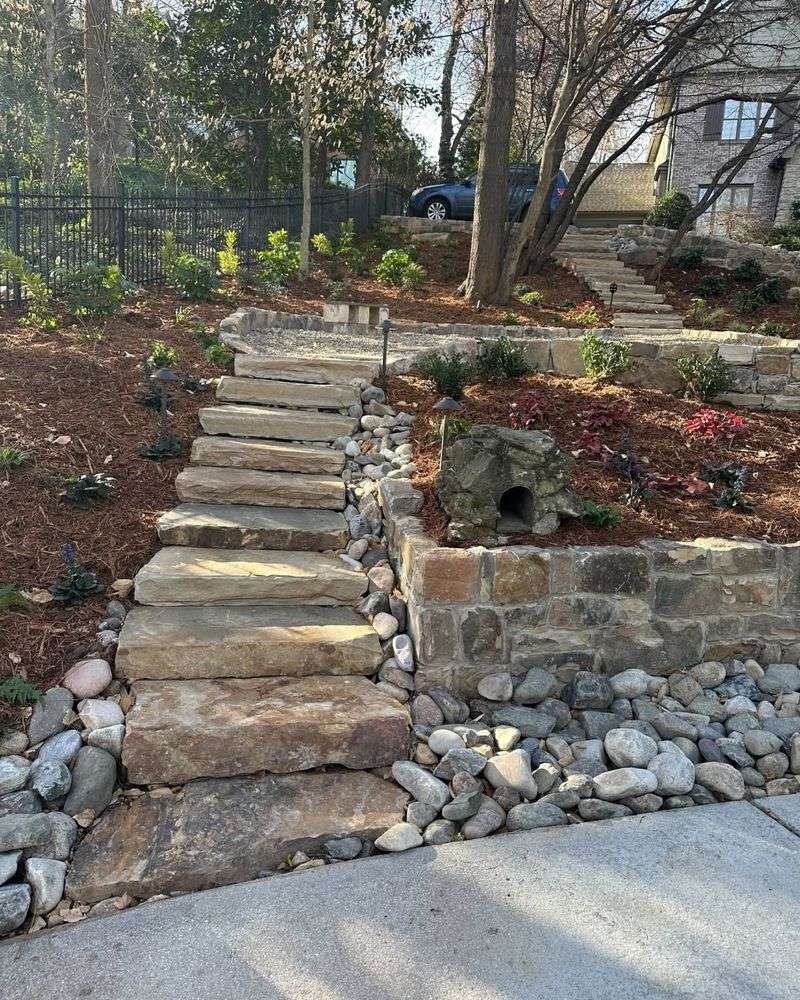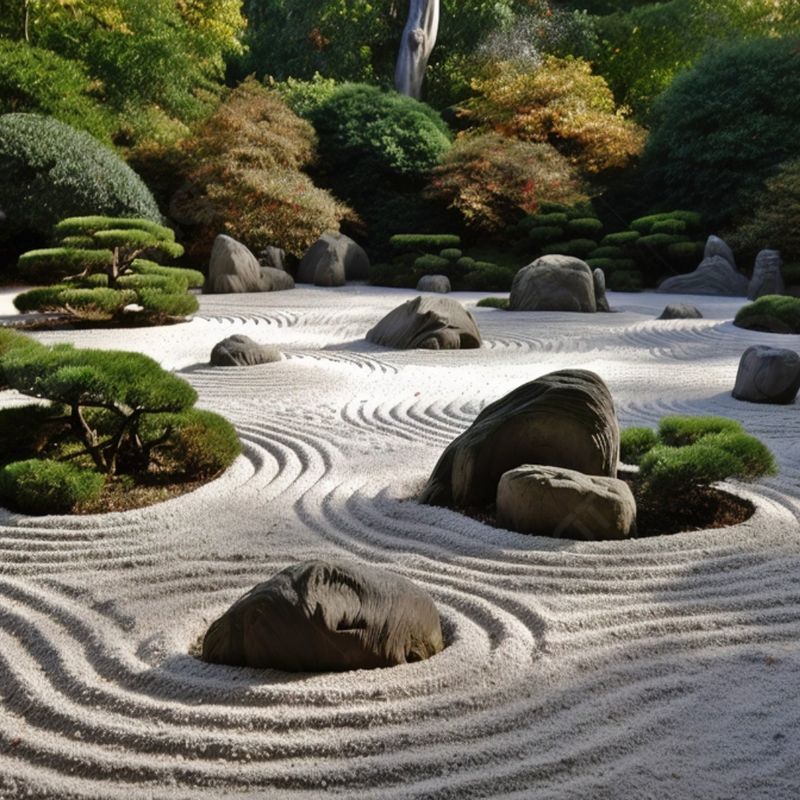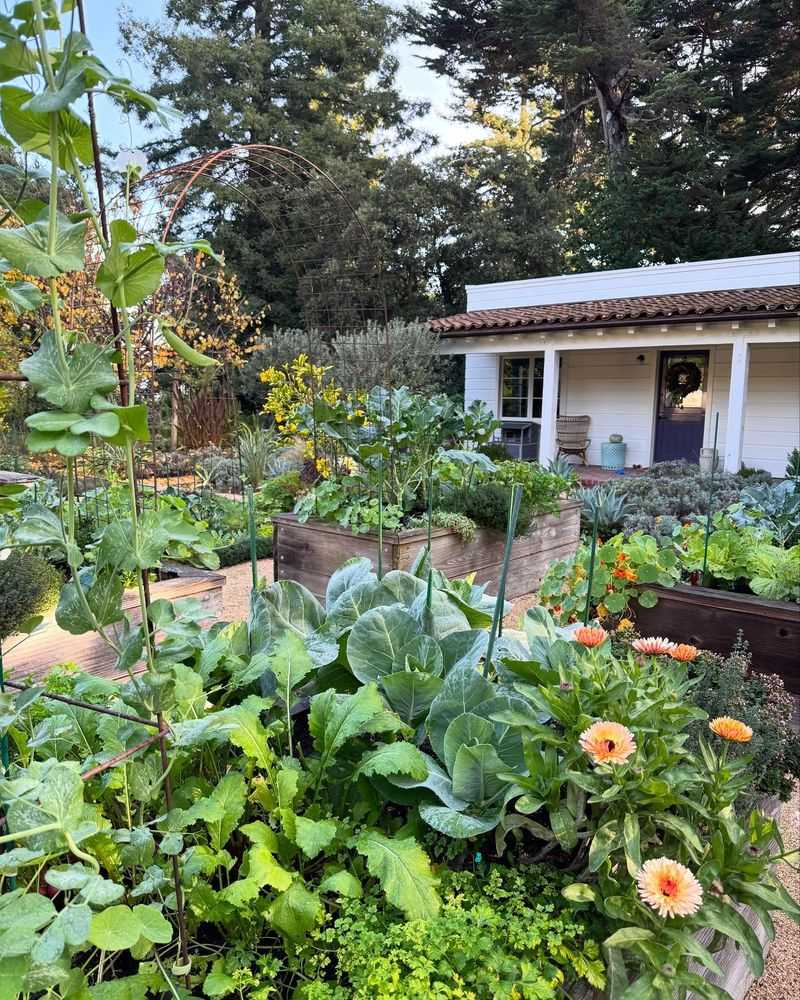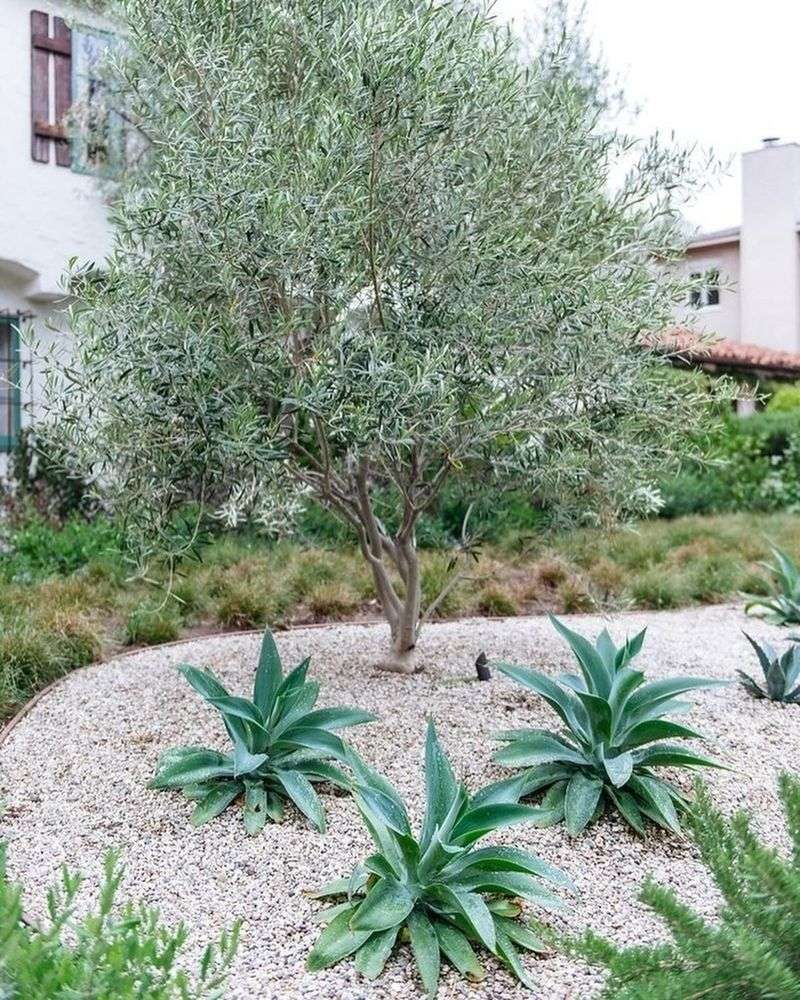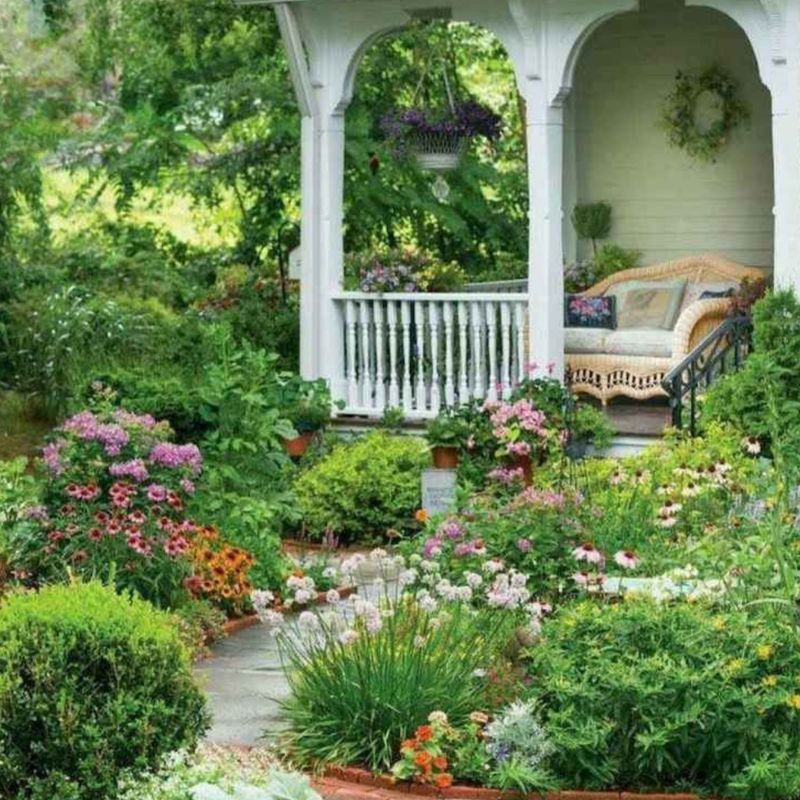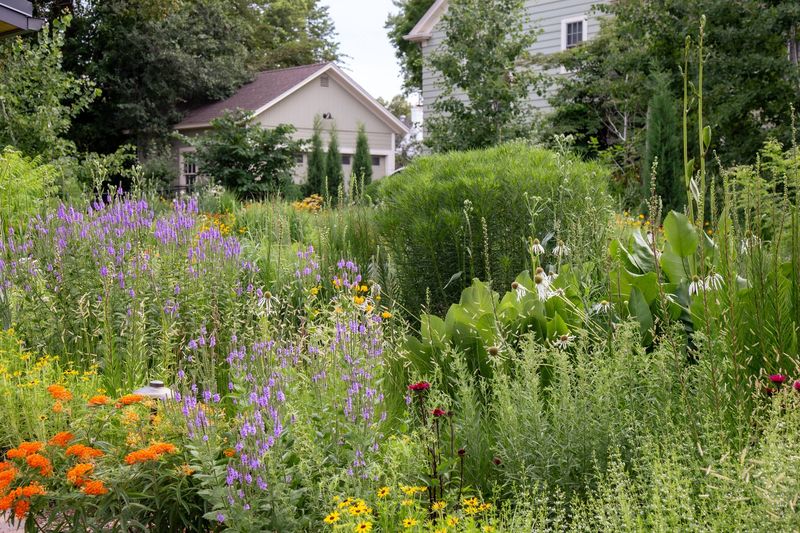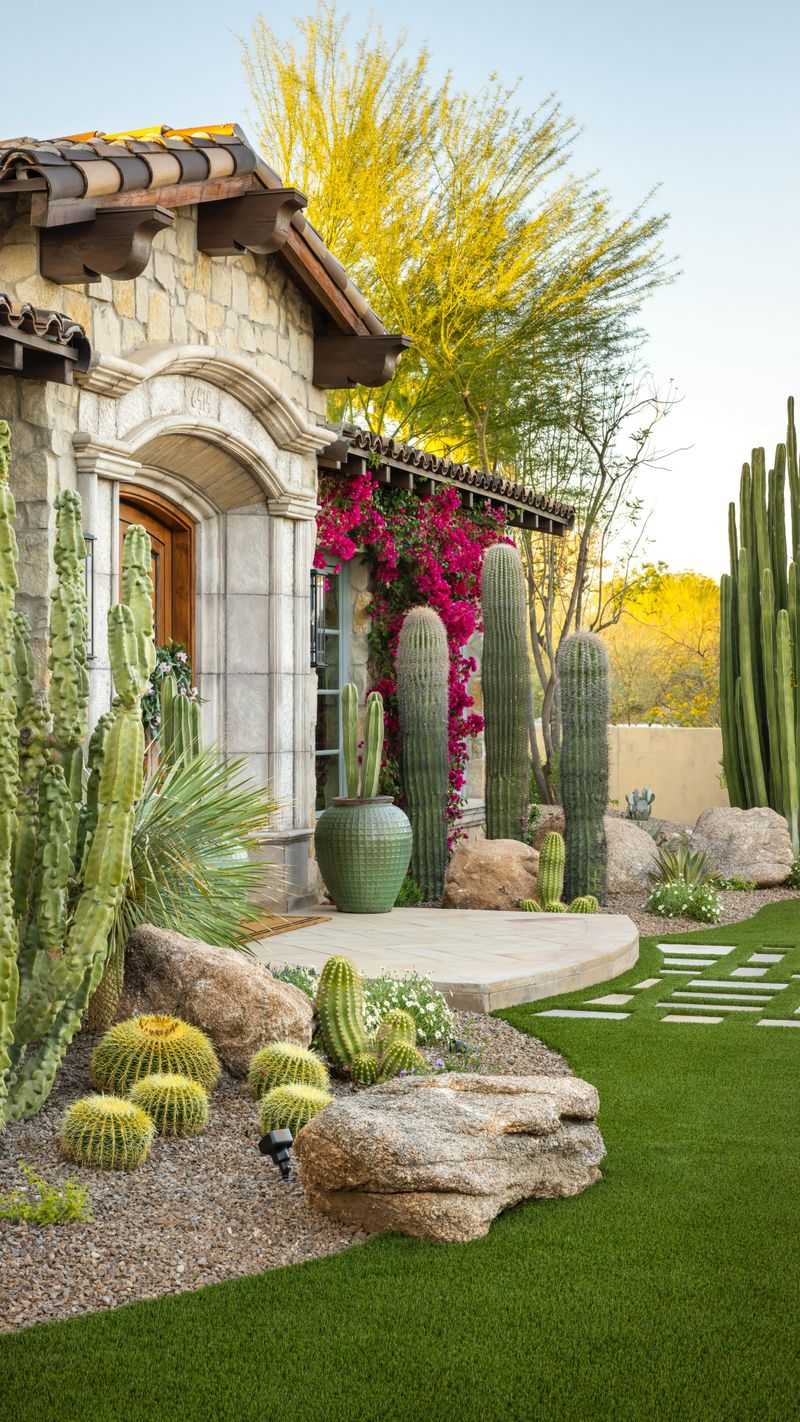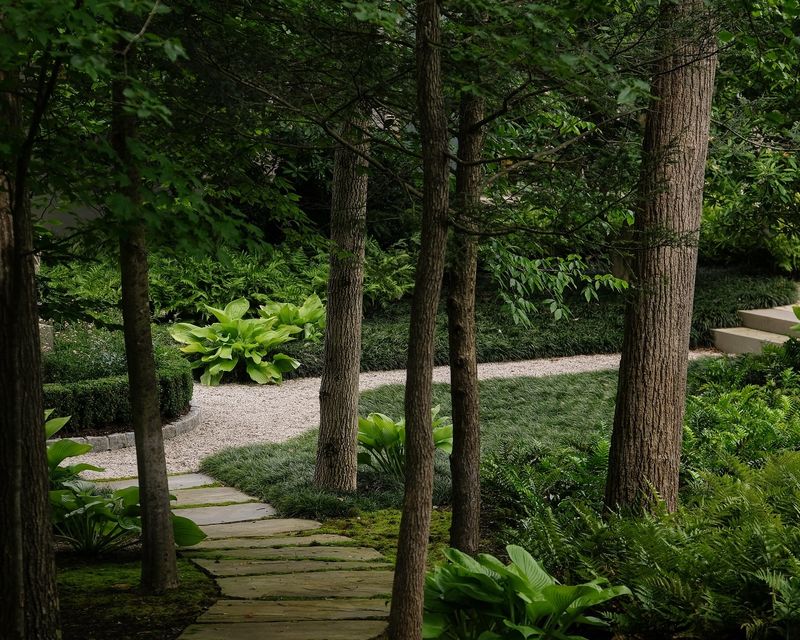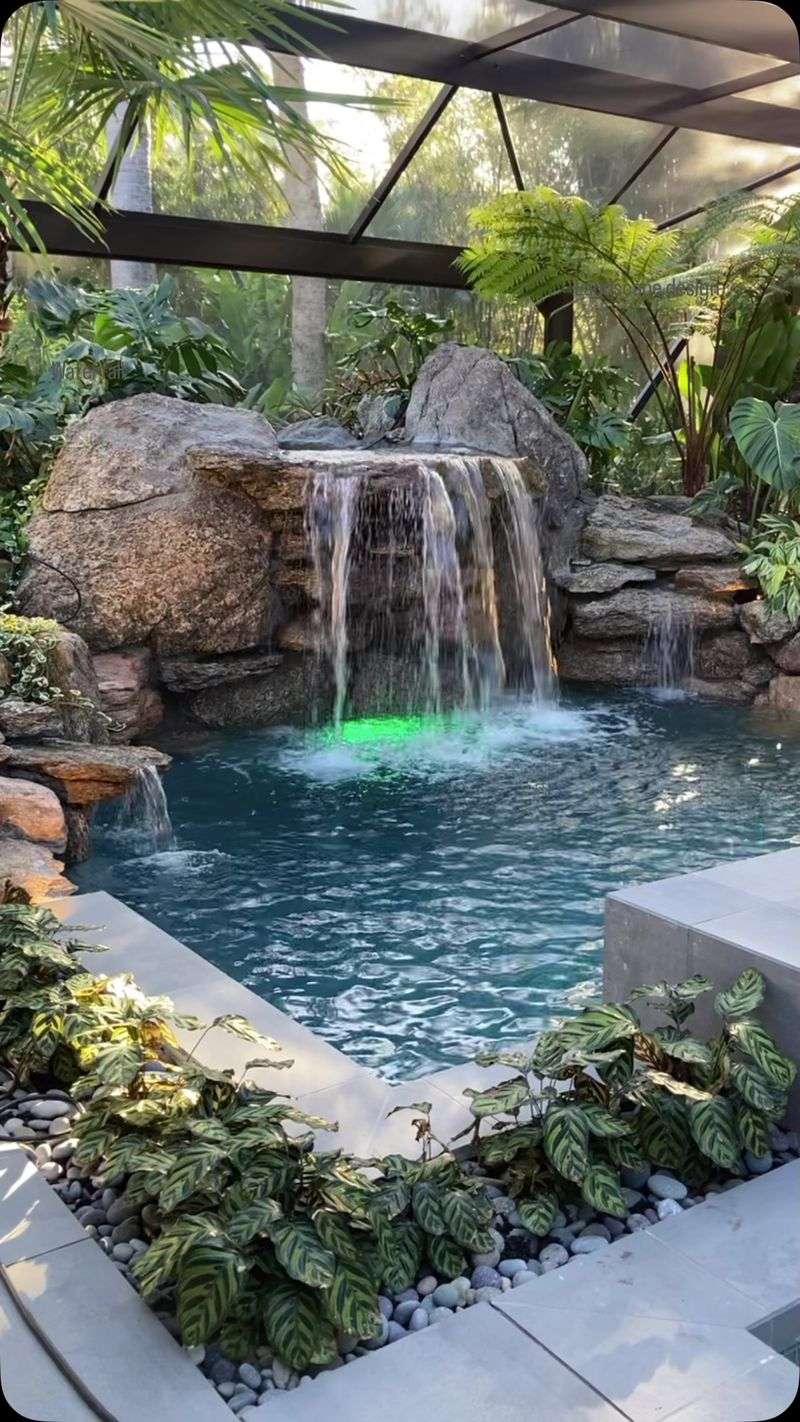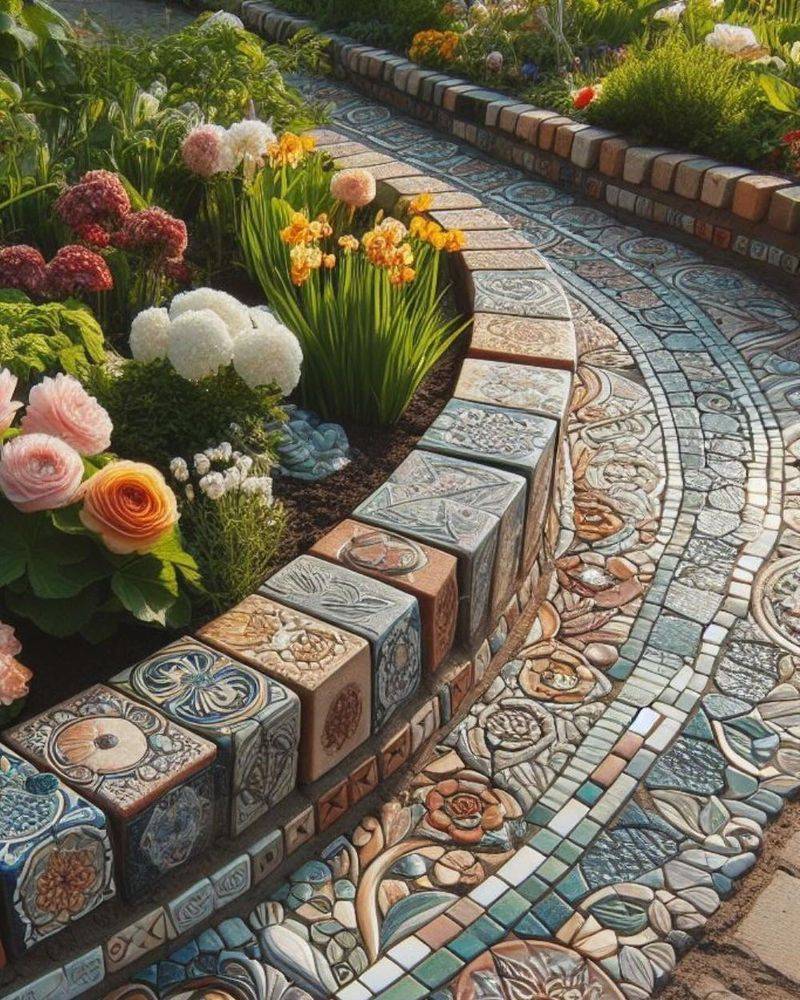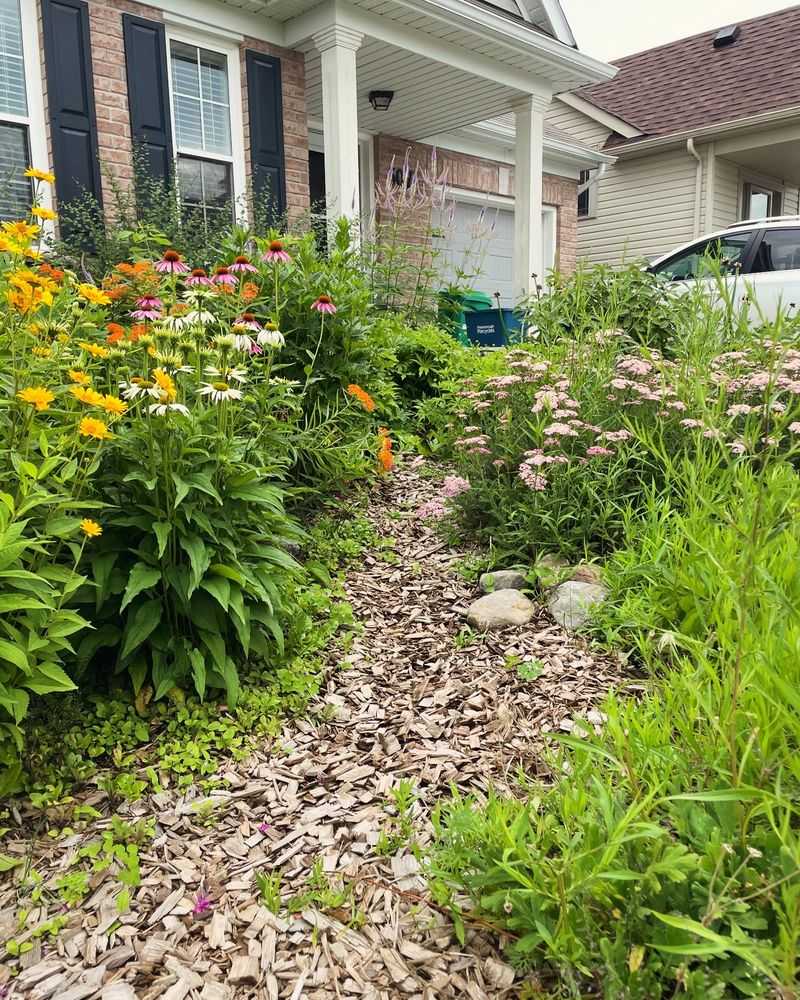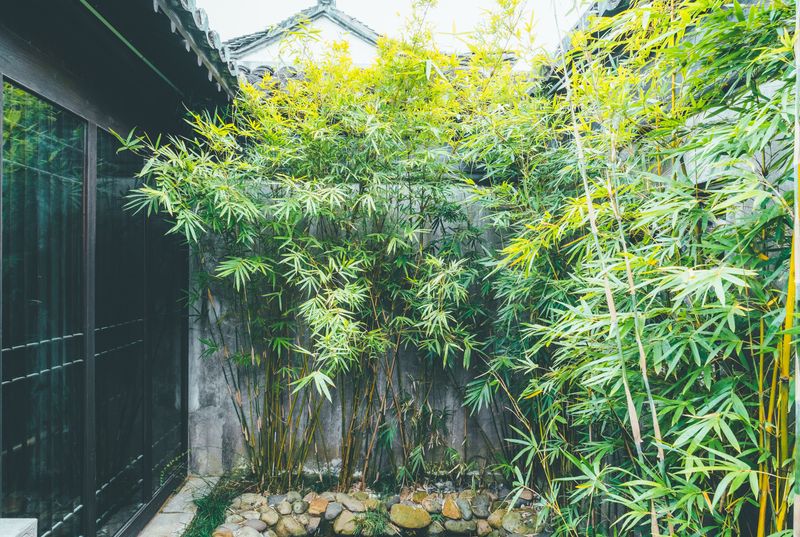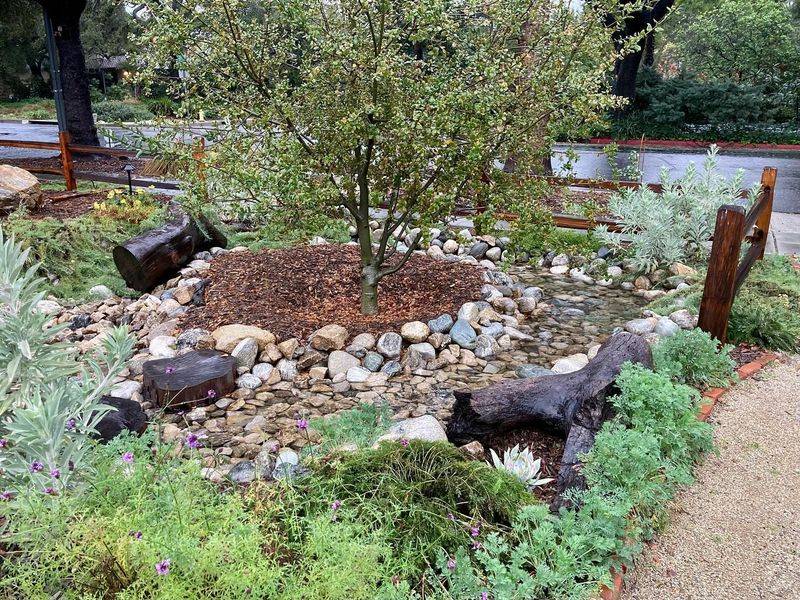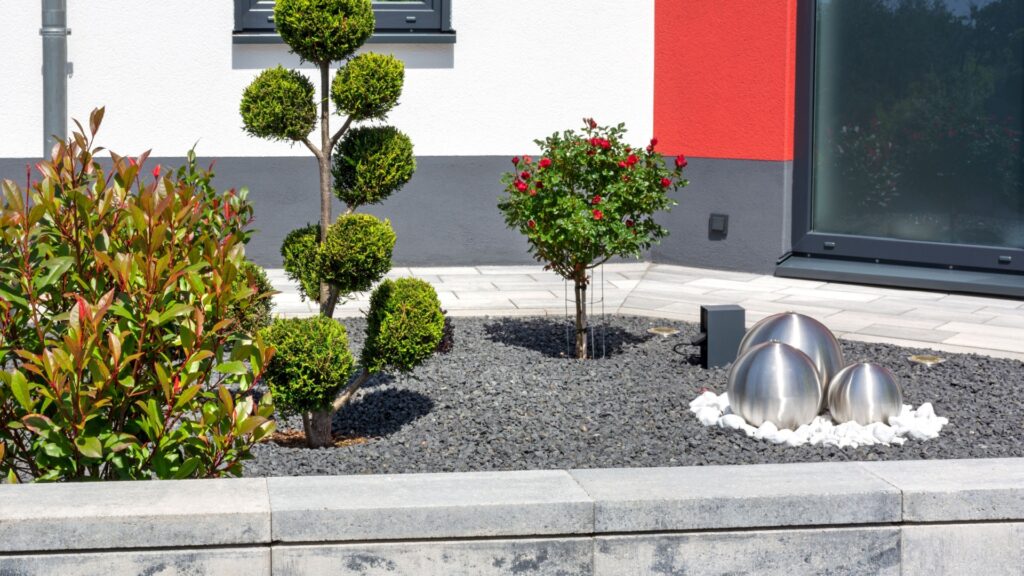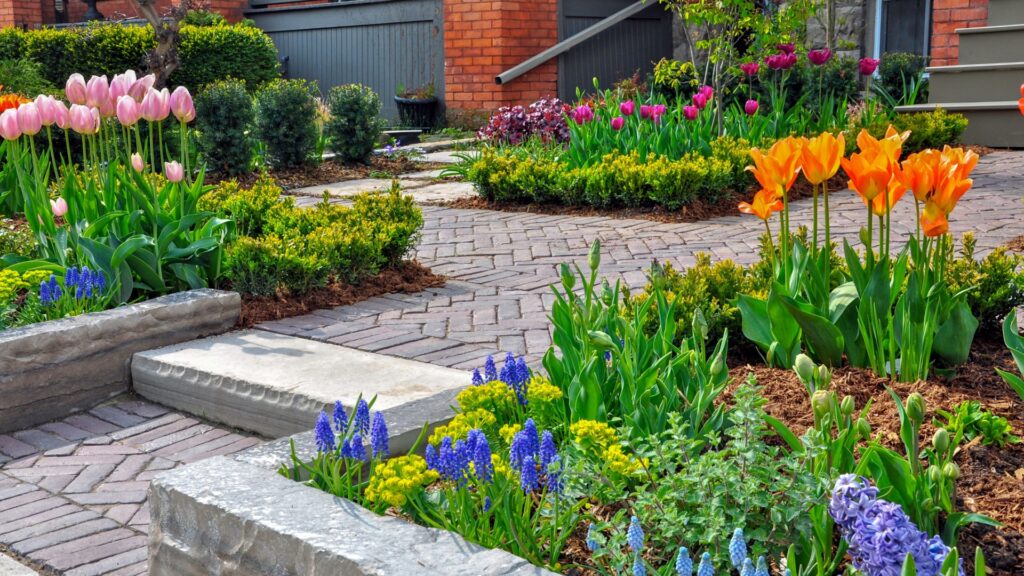They say you never get a second chance to make a first impression—and your front yard is your home’s opening act. But traditional lawns are thirsty time-stealers, guzzling water and demanding endless mowing. Fences might keep things in check, but they can feel like a cold shoulder, hiding your home’s charm behind wooden walls.
Why not think outside the picket fence? With a little creativity, you can roll out the welcome mat in style—ditching the upkeep for eye-catching alternatives that turn heads, lower bills, and make your home the talk of the block.
1. Rock Garden Wonderland
Transform your front yard into a low-maintenance masterpiece with carefully arranged rocks and boulders of varying sizes and colors. Incorporate drought-resistant plants like succulents and ornamental grasses between the stones for pops of life and texture.
The natural drainage of rock gardens makes them perfect for areas with little rainfall. Plus, they look amazing year-round with minimal upkeep, freeing your weekends from endless yard work.
2. Native Plant Paradise
Embrace your region’s natural beauty by filling your front yard with plants native to your area. These hardy survivors evolved specifically for your local climate, requiring far less water and care than imported varieties.
Native plants also attract local pollinators like butterflies and hummingbirds, turning your front yard into a buzzing ecosystem. The seasonal changes bring constant visual interest as different species bloom throughout the year.
3. Gravel and Ornamental Grasses
Create movement and texture by combining decorative gravel with tall, swaying ornamental grasses. The contrast between the solid ground cover and the dancing plumes makes for a dynamic landscape that changes with the breeze.
Choose grasses like feather reed, blue fescue, or Japanese forest grass for their distinctive shapes and colors. The gravel provides excellent drainage while suppressing weeds, making this combo practically maintenance-free once established.
4. Courtyard Entrance
Fashion an intimate courtyard space right at your home’s entrance using pavers or flagstone. Add container plants, a small water feature, and comfortable seating to create a welcoming transition zone between public and private spaces.
Courtyards naturally frame your front door and guide visitors toward your entrance. The defined space feels both open and private at once, offering the perfect spot for morning coffee or evening conversations without the barrier of a fence.
5. Terraced Landscape
Working with a sloped front yard? Embrace the natural contours by creating terraced planting beds with retaining walls of stone, timber, or concrete blocks. Each level becomes its own mini-garden with distinct plant groupings.
Terracing prevents erosion while maximizing planting space. The dimensional quality adds architectural interest to your property, making it stand out from flat lawns up and down the street.
6. Zen Garden Retreat
Bring tranquility to your entryway with a Japanese-inspired zen garden featuring raked gravel or sand patterns around carefully placed rocks. Add minimal plantings like Japanese maples, cloud-pruned shrubs, or bamboo for authentic Eastern aesthetics.
The meditative quality of zen gardens creates a peaceful transition between the bustling outside world and your home. The simple materials and clean lines offer a sophisticated alternative to traditional landscaping that neighbors will admire.
7. Edible Front Landscape
Rethink your front yard as productive space by incorporating beautiful edible plants. Blueberry bushes offer gorgeous fall color, while rainbow chard and purple kale make stunning ornamental borders.
Herb spirals create fascinating focal points while providing fresh flavors for your kitchen. Dwarf fruit trees can serve as shade-giving anchors in your design. This approach combines practicality with beauty while challenging outdated notions about where food can be grown.
8. Mediterranean Xeriscape
Channel sunny European vibes with drought-tolerant Mediterranean plants like lavender, rosemary, and olive trees. Combine these with gravel paths, terracotta pots, and perhaps a small stone fountain for authentic regional flair.
The silver-green foliage of Mediterranean plants creates a sophisticated palette that looks elegant year-round. Many of these plants are aromatic too, filling your front yard with delightful scents that welcome you home after a long day.
9. Cottage Garden Approach
Bring storybook charm to your entrance with a cottage garden filled with billowing perennials and flowering shrubs that spill onto a curved pathway. Think hollyhocks, foxgloves, daisies, and roses arranged in an artfully casual style.
Unlike formal gardens, cottage designs embrace a bit of cheerful chaos. Plants self-seed and intermingle, creating new combinations each year. The abundant flowers attract beneficial insects and provide cutting material for indoor bouquets throughout the growing season.
10. Prairie-Style Landscape
Celebrate America’s native grasslands with a prairie-inspired front yard featuring sweeping drifts of wildflowers and grasses. Plant in large, naturalistic groupings rather than formal rows to mimic natural meadow patterns.
Prairie landscapes look spectacular in late summer when grasses develop golden seedheads that catch the light. The deep root systems of prairie plants improve soil health while requiring minimal watering once established, making this style both beautiful and environmentally responsible.
11. Sculptural Desert Design
Embrace bold forms with architectural desert plants like agaves, yuccas, and barrel cacti arranged among decorative gravel or decomposed granite. The strong silhouettes create dramatic shadows and striking year-round interest.
Desert landscapes can incorporate surprising pops of color through flowering plants like bougainvillea or penstemon. Metal art pieces or carefully selected boulders can serve as focal points, complementing the plants’ natural geometry for a contemporary look that requires almost no water.
12. Woodland Garden Path
Recreate the magic of a forest floor with a shaded woodland garden featuring ferns, hostas, and native woodland flowers beneath existing trees. A meandering path of mulch or stepping stones invites exploration through the dappled light.
Woodland gardens excel in challenging north-facing or shady front yards where grass struggles to grow. The layered plantings create habitat for birds and beneficial insects. Spring-flowering bulbs can provide early season color before the tree canopy leafs out.
13. Tropical Oasis Entrance
Create vacation vibes year-round with bold-leaved tropical plants like cannas, elephant ears, and banana plants. In colder regions, use large containers that can be moved indoors during winter months.
The dramatic foliage creates an exotic atmosphere that stands out from typical suburban landscapes. Add a bubbling water feature to enhance the tropical feel and mask street noise. Colorful hammocks or Adirondack chairs complete the resort-inspired look.
14. Mosaic Tile and Succulent Garden
Blend hardscaping and plants by creating mosaic tile features surrounded by colorful succulent plantings. The permanent structure of the tile work provides year-round interest while the succulents add living texture.
Mosaic elements can include decorative stepping stones, a house number display, or even a small table. The endless color possibilities of both tiles and succulents allow for personal expression. This combination works especially well in warm climates where succulents thrive outdoors year-round.
15. Butterfly and Pollinator Haven
Transform your front yard into a wildlife sanctuary focused on supporting local pollinators. Include nectar plants like coneflowers and bee balm for adult butterflies, plus host plants like milkweed where they can lay eggs.
A small, shallow water dish with pebbles provides drinking spots for beneficial insects. Beyond butterflies, this approach attracts hummingbirds, bees, and other pollinators that help your entire neighborhood garden thrive while creating a constantly changing living display.
16. Asian-Inspired Bamboo Grove
Create an exotic screen with carefully selected non-invasive bamboo varieties planted in groupings. The vertical lines and gentle rustling of bamboo leaves bring movement and tranquility to your front space.
Choose clumping bamboo species rather than running types to avoid unwanted spread. Underplant with shade-loving perennials like ferns or hostas for ground-level interest. Black or red bamboo varieties offer distinctive color that complements traditional green species.
17. Rain Garden Depression
Turn a drainage problem into a landscape feature by creating a rain garden in a low spot of your yard. These shallow depressions, filled with water-loving native plants, temporarily hold rainwater runoff from roofs and driveways.
Rain gardens prevent erosion and filter pollutants before water enters the groundwater system. The specialized plants can handle both occasional flooding and dry periods between rains. This eco-friendly approach manages stormwater while creating a unique landscape element.
18. Modern Minimalist Layout
Adopt a sleek, contemporary look with clean lines, structured plantings, and monochromatic materials. Think linear concrete pavers flanked by low-maintenance greenery like boxwoods, dwarf ornamental grasses, or clipped lavender hedges.
Minimalist landscapes emphasize space and form, often using symmetry and repetition to create visual rhythm. The result is an uncluttered front yard that feels calm, refined, and effortlessly elegant—perfect for modern homes seeking curb appeal with a sophisticated edge.
19. Artistic Hardscape Focus
Shift the spotlight from plants to hardscape by incorporating artistic features like sculptural stonework, patterned brickwork, or custom concrete installations. Interspersed planters with striking foliage, like cordylines or Japanese blood grass, soften the design without overwhelming it.
This approach is ideal for dry climates or homeowners who prefer structure over softness. Hardscape-centric yards are not only low-maintenance but also uniquely expressive—blending function and artistry into a truly memorable entrance.

